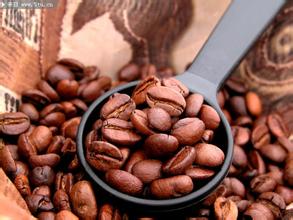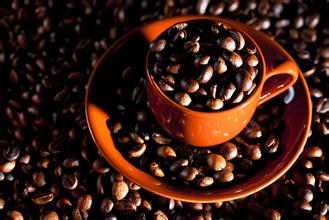Brief introduction of Katim Coffee Bean Flavor description Grinding scale treatment
Katim Coffee Bean Flavor Description Grind Scale Processing Region Profile
There are four coffee trees in the world, but the coffee we drink today is mainly the fruit of two coffee trees, one Arabica and the other Robasta.
Arabica coffee trees are not easy to grow, and many are on sloping lands at high altitudes, and picking requires manual labor. However, the taste is balanced and the caffeine content is also low. And Robasta species is easier to plant, all kinds of heat, cold, moisture, drought, disease resistance. Once Vietnam's coffee was attacked by leaf rust, Arabica coffee trees died, only to plant Robasta. In addition, the Rosetta species is also relatively easy to harvest, in addition to artificial vibration machine can also be competent. This variety is simply all kinds of benefits, but the fatal is the production of coffee beans aroma is very poor, bitter excess acidity, there is a high caffeine content, so more used to make instant coffee. Most of the beans on the market today are arabica.
Typica: The oldest indigenous variety of Ethiopia, native to Ethiopia and southeastern Sudan, from which all Arabica is derived. Elegant flavor, but weak constitution, poor disease resistance, fruit yield less. Jamaica Blue Mountain, Sumatra Mantning, Hawaii Kona and other excellent estate beans belong to Tibika. The top leaf of tibeka is red copper color, called red top coffee, tibeka belongs to arabica.
Katim is a variety introduced later. Its yield is relatively stable. It is resistant to diseases and insect pests. It is planted in large areas in Yunnan. It is easy to buy Katim beans on the market now. Katim aa beans are also exported beans. Generally speaking, it is not bad. Not to mention in China, even in the whole of Asia, Yunnan beans are considered very excellent. As for cat poop, mantinin, etc., coffee beans alone cannot be compared to tipica. The above are the basic varieties of Yunnan. Generally speaking, they all belong to the Tibika below Arabica and the varieties behind it. This is different from the Robusta in Hainan.

Important Notice :
前街咖啡 FrontStreet Coffee has moved to new addredd:
FrontStreet Coffee Address: 315,Donghua East Road,GuangZhou
Tel:020 38364473
- Prev

Brief introduction of Taste characteristics and Flavor description of Tanzania Coffee Bean
The main coffee-producing areas in Tanzania are located at the foot of Mount Kilimanjaro, which is rich in volcanic soil, and some of the coffee trees planted here are more than 100 years old. Coffee was first planted by Christians from Kenya. Coffee trees must be carefully taken care of, weeded and fertilized. And
- Next

Which producing areas does Yega Xuefei have? flavor description of coffee beans and taste treatment.
Description of the characteristics and flavor of coffee beans in several producing areas the coffee trees were planted by monks in Europe (somewhat similar to those initiated by Belgian monks to grow wheat and brew beer), and were later transferred to farmers or cooperatives. Yega Xuefei is actually constructed by surrounding coffee communities or cooperatives, including Edido, Hafusha and Hama near the Fog Valley.
Related
- Detailed explanation of Jadeite planting Land in Panamanian Jadeite Manor introduction to the grading system of Jadeite competitive bidding, Red bid, Green bid and Rose Summer
- Story of Coffee planting in Brenka region of Costa Rica Stonehenge Manor anaerobic heavy honey treatment of flavor mouth
- What's on the barrel of Blue Mountain Coffee beans?
- Can American coffee also pull flowers? How to use hot American style to pull out a good-looking pattern?
- Can you make a cold extract with coffee beans? What is the right proportion for cold-extracted coffee formula?
- Indonesian PWN Gold Mandrine Coffee Origin Features Flavor How to Chong? Mandolin coffee is American.
- A brief introduction to the flavor characteristics of Brazilian yellow bourbon coffee beans
- What is the effect of different water quality on the flavor of cold-extracted coffee? What kind of water is best for brewing coffee?
- Why do you think of Rose Summer whenever you mention Panamanian coffee?
- Introduction to the characteristics of authentic blue mountain coffee bean producing areas? What is the CIB Coffee Authority in Jamaica?

